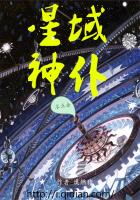The principle of the synthesis of contradictories, popularly known by the name of humor, is necessarily limited in its field to man.
For whether it have to do wholly with actions, or partly with the words that express them, whether it be presented in the shape of a pun or a pleasantry, it is in incongruous contrasts that its virtue lies. It is the unexpected that provokes the smile. Now no such incongruity exists in nature; man enjoys a monopoly of the power of making himself ridiculous. So pleasant is pleasantry that we do indeed cultivate it beyond its proper pale. But it is only by personifying Nature, and gratuitously attributing to her errors of which she is incapable, that we can make fun of her; as, for instance, when we hold the weather up to ridicule by way of impotent revenge. But satires upon the clown-like character of our climate, which, after the lamest sort of a spring, somehow manages a capital fall, would in the Far East be as out of keeping with fancy as with fact. To a Japanese, who never personifies anything, such innocent irony is unmeaning. Besides, it would be also untrue. For his May carries no suggestion of unfulfilment in its name.
Those Far Eastern paintings which have to do with man fall for the most part under one of two heads, the facetious and the historical.
The latter implies no particularly intimate concern for man in himself, for the past has very little personality for the present.
As for the former, its attention is, if anything, derogatory to him, for we are always shy of making fun of what we feel to be too closely a part of ourselves. But impersonality has prevented the Far Oriental from having much amour propre. He has no particular aversion to caricaturing himself. Few Europeans, perhaps, would have cared to perpetrate a self-portrait like one painted by the potter Kinsei, which was sold me one day as an amusing tour de force by a facetious picture-dealer. It is a composite picture of a new kind, a Japanese variety of type face. The great potter, who was also apparently no mean painter, has combined three aspects of himself in a single representation. At first sight the portrait appears to be simply a full front view of a somewhat moon-faced citizen; but as you continue to gaze, it suddenly dawns on you that there are two other individuals, one on either side, hob-nobbing in profile with the first, the lines of the features being ingeniously made to do double duty; and when this aspect of the thing has once struck you, you cannot look at the picture without seeing all three citizens simultaneously. The result is doubtless more effective as a composition than flattering as a likeness.
Far Eastern sculpture, by its secondary importance among Far Eastern arts, witnesses again to the secondary importance assigned to man at our mental antipodes. In this art, owing to its necessary limitations, the representation of nature in its broader sense is impossible. For in the first place, whatever the subject, it must be such as it is possible to present in one continuous piece; disconnected adjuncts, as, for instance, a flock of birds flying, which might be introduced with great effect in painting, being here practically beyond the artist's reach. Secondly, the material being of uniform appearance, as a rule, color, or even shading, vital points in landscape portrayal, is out of the question, unless the piece were subsequently painted, as in Grecian sculptures, a custom which is not practised in China or Japan. Lastly, another fact fatal to the representation of landscape is the size. The reduced scale of the reproduction suggests falsity at once, a falsity whose belittlement the mind can neither forget nor forgive. Plain sculpture is therefore practically limited to statuary, either of men or animals. The result is that in their art, where landscape counts for so much, sculpture plays a very minor part. In what little there is, Nature's place is taken by Buddha. For there are two classes of statues, divided the one from the other by that step which separates the sublime from the ridiculous, namely, the colossal and the diminutive. There is no happy human mean. Of the first kind are the beautiful bronze figures of the Buddha, like the Kamakura Buddha, fifty feet high and ninety-seven feet round, in whose face all that is grand and noble lies sleeping, the living representation of Nirvana; and of the second, those odd little ornaments known as netsuke, comical carvings for the most part, grotesque figures of men and monkeys, saints and sinners, gods and devils. Appealing bits of ivory, bone, or wood they are, in which the dumb animals are as speaking likenesses as their human fellows.
The other arts show the same motif in their decorations. Pottery and lacquer alike witness the respective positions assigned to the serious and the comic in Far Eastern feeling.
The Far Oriental makes fun of man and makes love to Nature; and it almost seems as if Nature heard his silent prayer, and smiled upon him in acceptance; as if the love-light lent her face the added beauty that it lends the maid's. For nowhere in this world, probably, is she lovelier than in Japan: a climate of long, happy means and short extremes, months of spring and months of autumn, with but a few weeks of winter in between; a land of flowers, where the lotus and the cherry, the plum and wistaria, grow wantonly side by side; a land where the bamboo embosoms the maple, where the pine at last has found its palm-tree, and the tropic and the temperate zones forget their separate identity in one long self-obliterating kiss.















